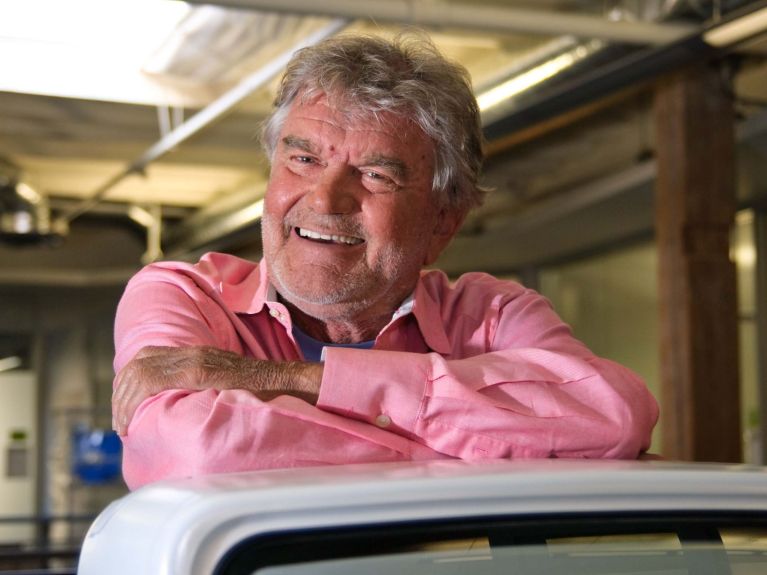“Leading to success stories”
Hartmut Esslinger is one of Germany’s best-known designers. He talks about traditions and the challenges facing German design.

The German designer Hartmut Esslinger has achieved global success with his design ideas. He founded the company frog design and advised international corporations such as Sony early on, as well as Apple founder Steve Jobs. Born in the Black Forest in 1944, Esslinger began his career in Germany but for decades has been living in California.
Mr Esslinger, how was design from Germany viewed when you moved to the USA - and what is the situation today?
Norio Ōga from Sony loved our “German” design, such as stereo systems and TVs for WEGA and the cool adverts of the time, while Steve Jobs admired Sony’s innovation and our “international style”. Steve also liked the Braun coffee machines. It was the Porsche 911 that was truly iconic German design for him, however. Because we were the first major design studio in Silicon Valley, the American design elite did not really notice us for a long time. But nowadays, convergent “design 4 industry” – i.e. physical products and digital software - is no longer the domain of just one country.
When people talk about the beginnings of German design, they often cite the Bauhaus in the 1920s, and sometimes also the Ulm School of Design, which existed from 1953 to 1968. What significance do these institutions have for you?
Both schools were internationally revolutionary and - in each case following the two world wars - permanently renewed industrial culture; to this day, they influence “design 4 industry”. The Ulm School of Design in particular linked design to modern production, and to science, semantics and communication.

Unlike the admirers of Bauhaus and the Ulm School of Design, who insist on design being as sober as possible, you bring emotions into your designs. Is that still topical today?
I admired both schools, and in Ulm especially Hans Gugelot and Herbert Lindinger. However, while the two of them creatively designed complex products with intelligent proportions and functional details, the “form follows function” mantra was often used to justify embarrassingly boring designs. I found my role models in Italian design – where the motto became “form follows emotion”.
For a while it was the case that German design was based on its potential for industrial manufacturing. Nowadays, many people dream of using 3D printing for example to make production more individual and ecological. Is that sensible?
Individual consumer products printed in 3D are neither safe nor ecological. Following the initial hype, 3D is used where traditional methods fall short: for artificial cardiac valves, high-tech components, in biochemicals and for expensive watches.
It is a well-known fact that design brings about positive developments in conjunction with innovation and economics, and this has repeatedly led to success stories in Germany too.
What is the standing of German design today?
It could be even better. On the level of vocational training, it has distanced itself too far from “design 4 industry”. It is a well-known fact that design brings about positive developments in conjunction with innovation and economics, and this has repeatedly led to success stories in Germany too. This is also true of current issues and challenges. Berlin policymakers – as far as I can tell from the outside - are not so aware as they should be of this connection. And yet institutions such as the OECD also recommend a more experimental and visionary approach to promoting innovations.
What would you propose?
Holistic training in design is necessary to be a global player. Universities should focus on producing graduates who are relevant as industry partners and able to challenge them to make progress.


